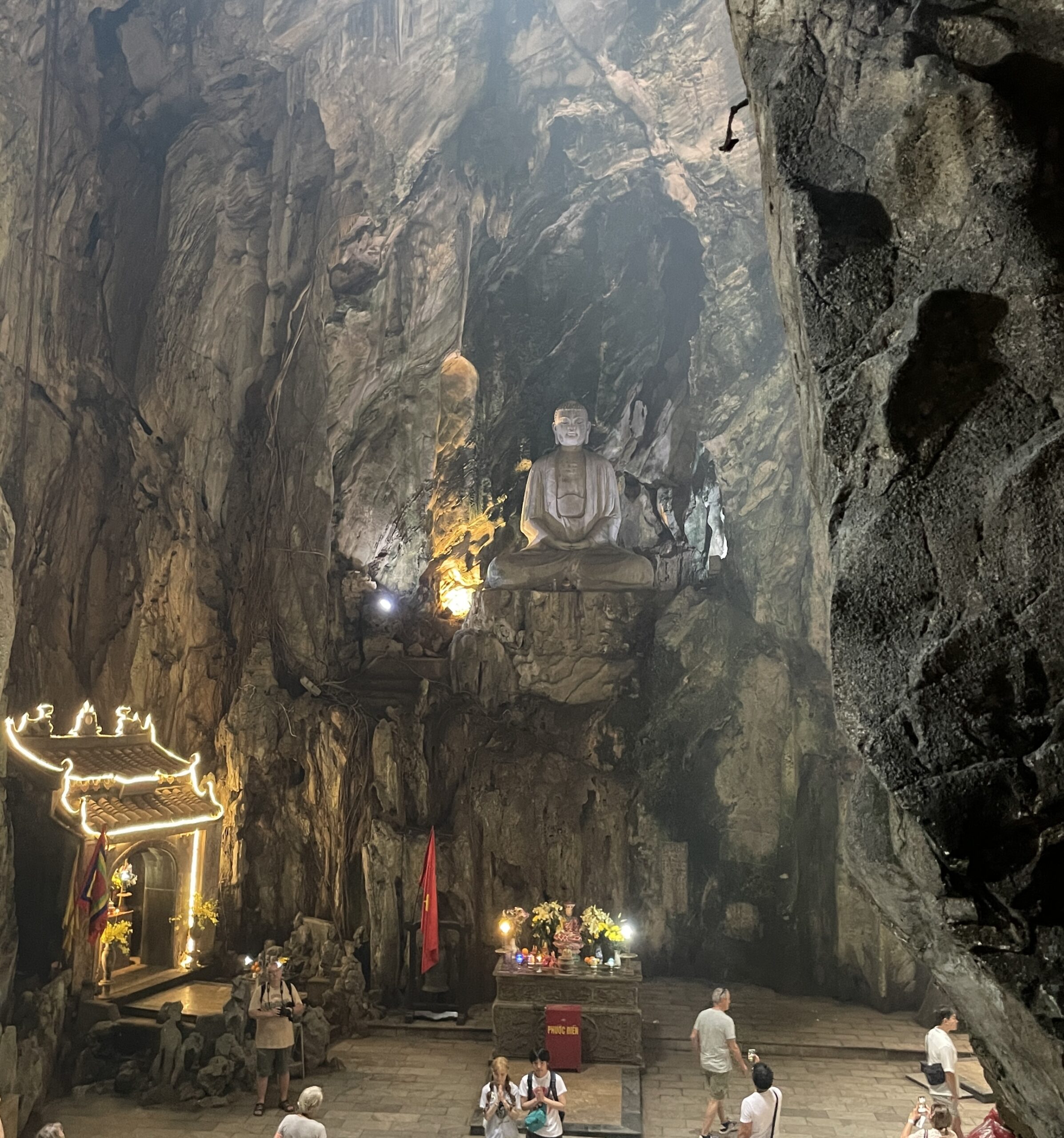Marble Mountains in Da Nang: Is It Worth the Trip?
The Marble Mountains in Da Nang are one of those destinations that quietly pop up on most Vietnam itineraries. Not overhyped, but still worthy of curiosity.
Just a short drive from the city center, the cluster of five marble and limestone hills offers a mix of spirituality, history, and natural beauty all in one spot.
You’ll find hidden caves, centuries-old Buddhist sanctuaries, stone steps leading to panoramic views, and tucked-away corners that feel worlds away from the beach buzz of Da Nang.
It’s a popular half-day trip for travelers looking to break up their beach time with something a little more cultural and scenic.
Whether you’re chasing the views of Da Nang from above, curious about Vietnamese religious traditions, or just want to know what all the subtle buzz is about, this guide breaks down what to expect at the Marble Mountains.
And if you’re planning out your route, be sure to check out more of the best things to do in Da Nang while you’re here.
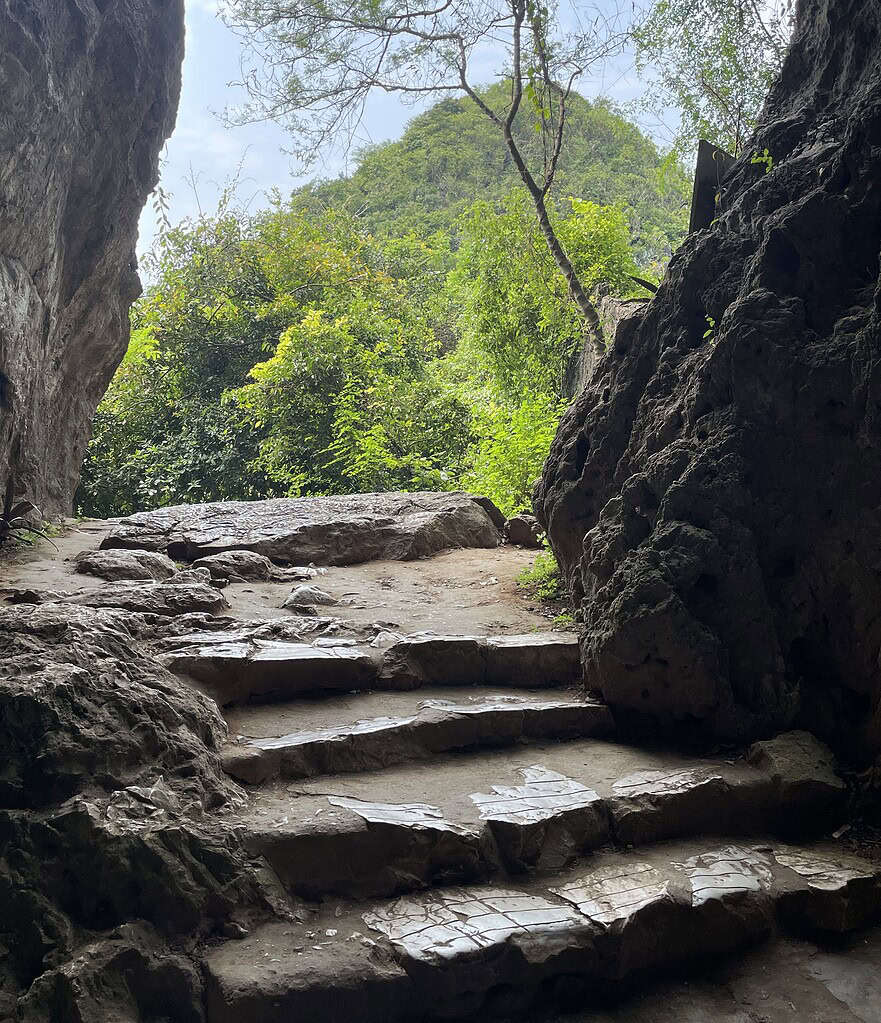
How to Get to the Marble Mountains
Getting to the Marble Mountains in Da Nang is very straightforward, whether you’re based in Da Nang or even Hoi An.
They’re located about 8–9 km south of central Da Nang and around 20–25 minutes north of Hoi An, making it an easy stop regardless of where you’re staying.
- Taxi or Grab: For a stress-free option, Grab app or a metered taxi is reliable and affordable. A one-way ride from Da Nang center will run you around 100,000–150,000 VND ($4–6 USD). From Hoi An, expect to pay closer to 200,000–250,000 VND ($7–9 USD).
- Tour or Private Driver: If you’re already doing a day tour or hiring a driver for other nearby attractions like the Hai Van Pass or Ba Na Hills, you can easily add Marble Mountains to the route. It’s a short stop that fits nicely into a full-day itinerary.
- Motorbike: If you’re comfortable driving and you’ve rented a motorbike, you can make your way over there. The roads are paved and easy to navigate, and you’ll pass by beachside views and local life along the way.
Parking is available for both bikes and cars right at the entrance for a small fee (usually 5,000–10,000 VND). If you’re on two wheels, just make sure to bring a lock and keep your valuables with you.
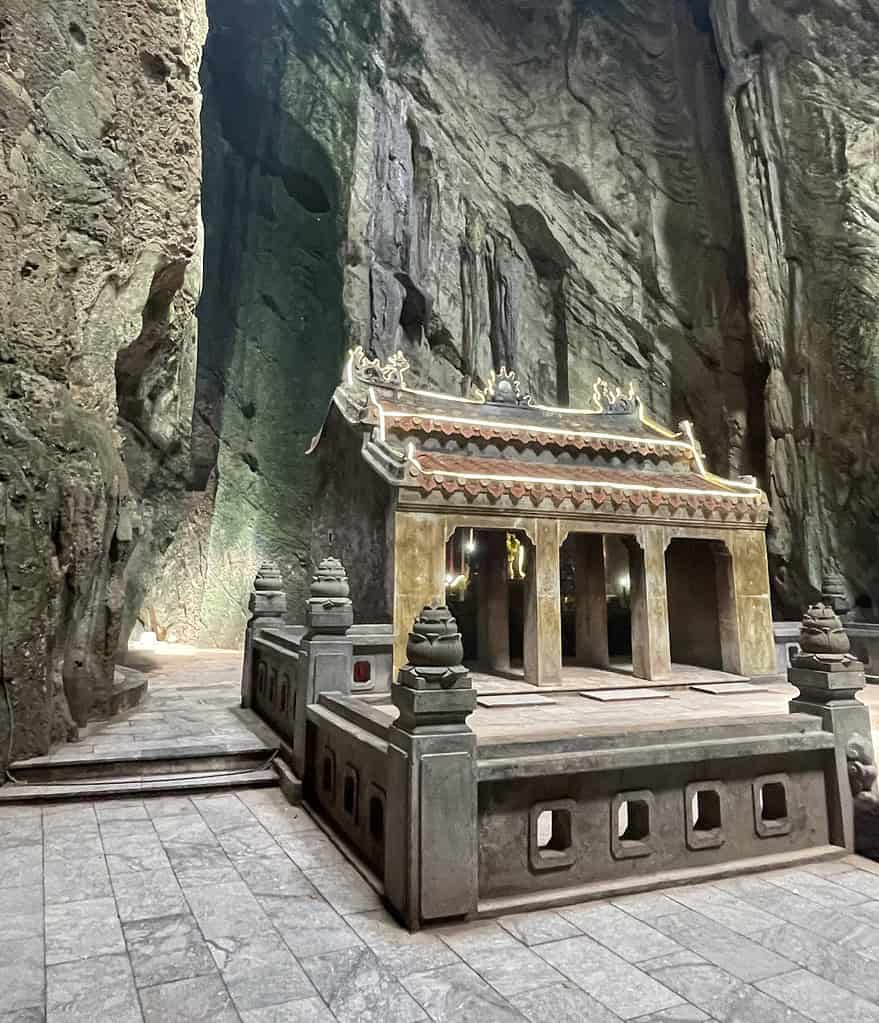
What to See and Expect at the Marble Mountains
The Marble Mountains in Da Nang are a cluster of five marble and limestone hills, each named after a natural element, water, wood, fire, metal, and earth.
But the main one you’ll be exploring is Thuy Son (Water Mountain), where most of the caves, pagodas, and viewpoints are located.
I’ve been here twice now, and it’s absolutely worth visiting. The views from the top, both inland toward the city and out toward the sea, are stunning.
If you go early in the morning, you’ll avoid most of the crowds, which makes the whole experience a lot more peaceful.
Entry to the Marble Mountains costs 40,000 VND, and if you choose to take the elevator to the main level instead of hiking up, that’s an additional 15,000 VND.
The site is open daily from 7:00 AM to 5:30 PM, giving you plenty of time to explore.
You can absolutely hike it, the stairs to the main areas aren’t too bad. But if you want to access the highest viewpoints (the ones with those epic panoramas), expect some steeper, more rugged climbs.
Heads up: Wear proper shoes, the paths can be damp, uneven, and slippery, especially after rain. It’s not a flip-flop-friendly attraction to visit.
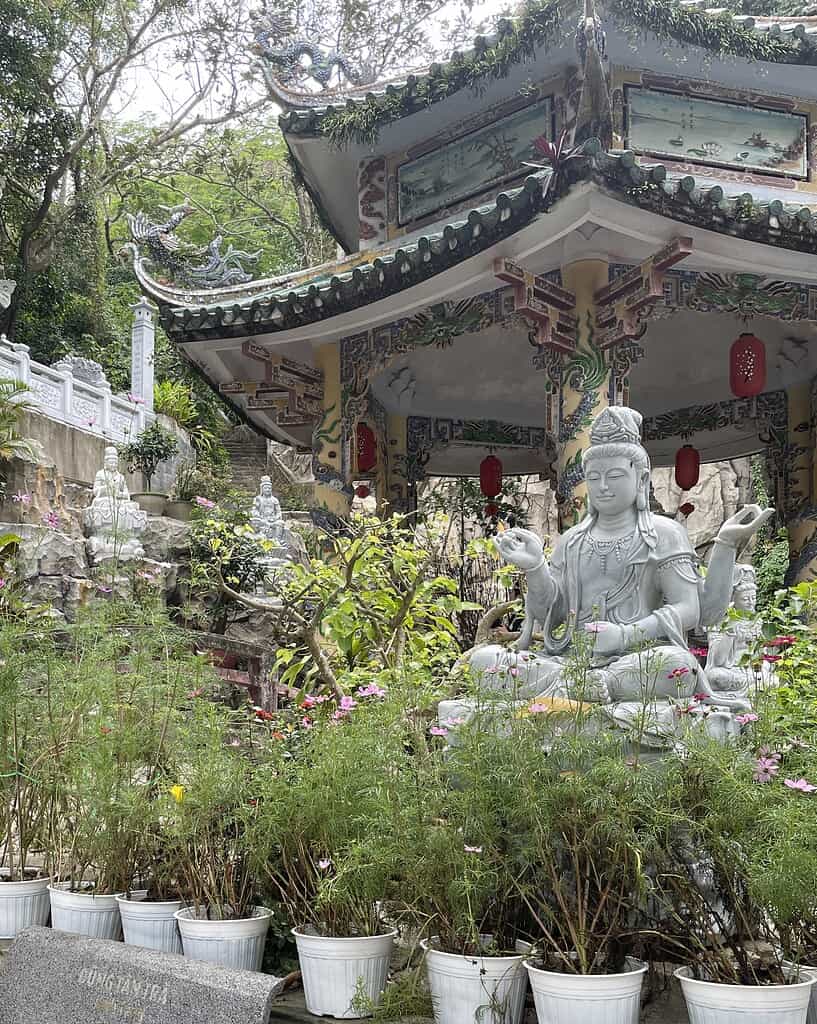
- Elevator or Stair Climb: You can take an elevator (yes, there’s one) to the top level for 15,000 VND or walk up a steep set of stairs. The stairs are manageable, but they do get slippery, especially after rain.
- Panoramic Viewpoints: There are several great viewpoints at the top, offering a wide view of Da Nang city, the coastline, and nearby beaches. It’s worth the quick climb to see the contrast between the natural limestone peaks and modern cityscape below.
- Huyen Khong Cave: This is the star of the show. A massive, open-roofed cave with beams of light shining down, it feels ancient, dramatic, and oddly peaceful. There are altars and statues inside, and incense fills the air.
- Linh Ung Pagoda: Not to be confused with the big Lady Buddha pagoda in Son Tra, this Linh Ung sits quietly at the top of the mountain, surrounded by stone carvings and trees. It’s one of the most photogenic spots on the mountain.
- Small Tunnels & Hidden Shrines: You’ll find winding stone paths that lead to smaller caves, temples, and even tight tunnels that you can (carefully) crawl through. It’s a mix of nature, religion, and a bit of Indiana Jones energy.
- Marble Workshops Below: At the base, you’ll see local marble carving shops where artisans sculpt statues, fountains, and souvenirs. Worth a browse, even if you’re not buying.
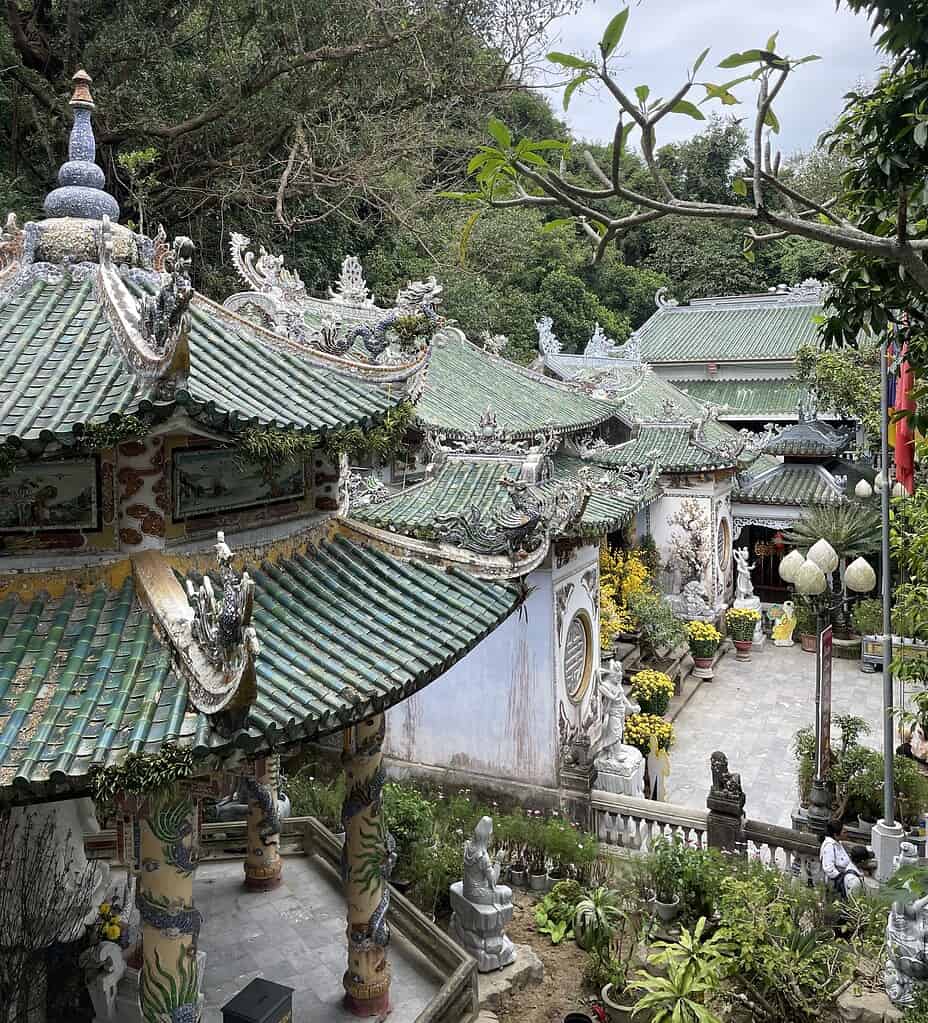
Tips for Visiting the Marble Mountains
A little planning goes a long way when visiting the Marble Mountains. Here are some helpful tips to make the most of your visit to the mountains:
- Go early (or late): Try to visit right when it opens at 7:00 AM or closer to closing time around 4:30 PM. Midday gets busy with tour groups and scorching sun. Early mornings are quieter and cooler, it’s way more enjoyable.
- Wear proper shoes: This isn’t the place for sandals or flip-flops. The stone steps are uneven and can be slippery, especially in damp weather. A good pair of sneakers or trail shoes will save your ankles.
- Bring small cash: Entry is 40,000 VND, plus 15,000 VND for the elevator if you choose it. Keep some small bills handy for tickets, snacks, and bottled water.
- Be respectful: There are active pagodas and temples throughout the site. Dress modestly and keep your voice down in sacred spaces. It’s still a functioning religious site for many locals who you may spot praying as you’re exploring around.
- Hydrate and take breaks: There are a lot of stairs and steep climbs, especially if you want to get to the best viewpoints. Bring water or buy some at the base before heading up.
- Keep your ticket: You might be asked to show it more than once, especially if you’re exploring different parts of the mountain.
- Avoid the big tour crowds: For a more peaceful experience, go solo or with a small group. Most large tour buses start arriving by late morning, so come early if you want to beat the rush.
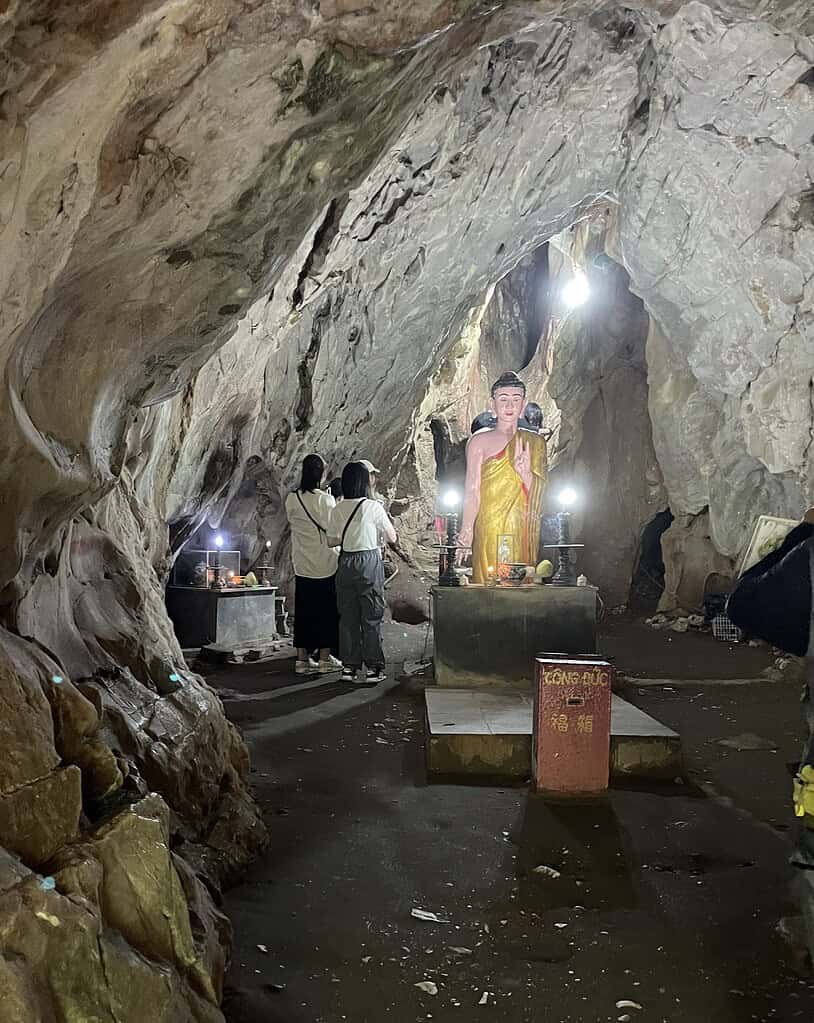
Is it Worth Visiting the Marble Mountains in Da Nang?
If you’re into scenic views, cultural sites, and a bit of light hiking, the Marble Mountains definitely deliver.
Between the panoramic coastal overlooks, peaceful pagodas, and hidden caves, it offers a unique mix of nature and spirituality that’s hard to find elsewhere.
It’s especially worth visiting if you’re already in Da Nang or passing through on the way to Hoi An. It’s easy to fit into a half-day trip, and if you come early enough, you’ll beat both the crowds and the heat.
I really enjoyed exploring the different structures, climbing up to catch those sweeping views, and wandering through the caves, which also make for some pretty unique photo ops.
You won’t need more than a couple of hours here, but it leaves a lasting impression, peaceful, photogenic, and a refreshing break from the usual city stops.
If you’re spending a few days in Da Nang, consider also checking out Ba Na Hills and the Lady Buddha at Linh Ung Pagoda. I mean it’s hard to miss Lady Buddha as it’s lit up at night and easy to spot from the long shores of Da Nang.
Both are iconic sights that offer their own unique experiences beyond the Marble Mountains.
If you’re venturing and exploring around Hoi An, by the way, another attraction you can’t miss is My Son Sanctuary, it’s a UNESCO World Heritage Site.
It’s about a 45-minute drive from Hoi An and offers a quiet, mystical escape with moss-covered towers and intricate carvings that whisper centuries of history. Enjoy your adventures in Central Vietnam!
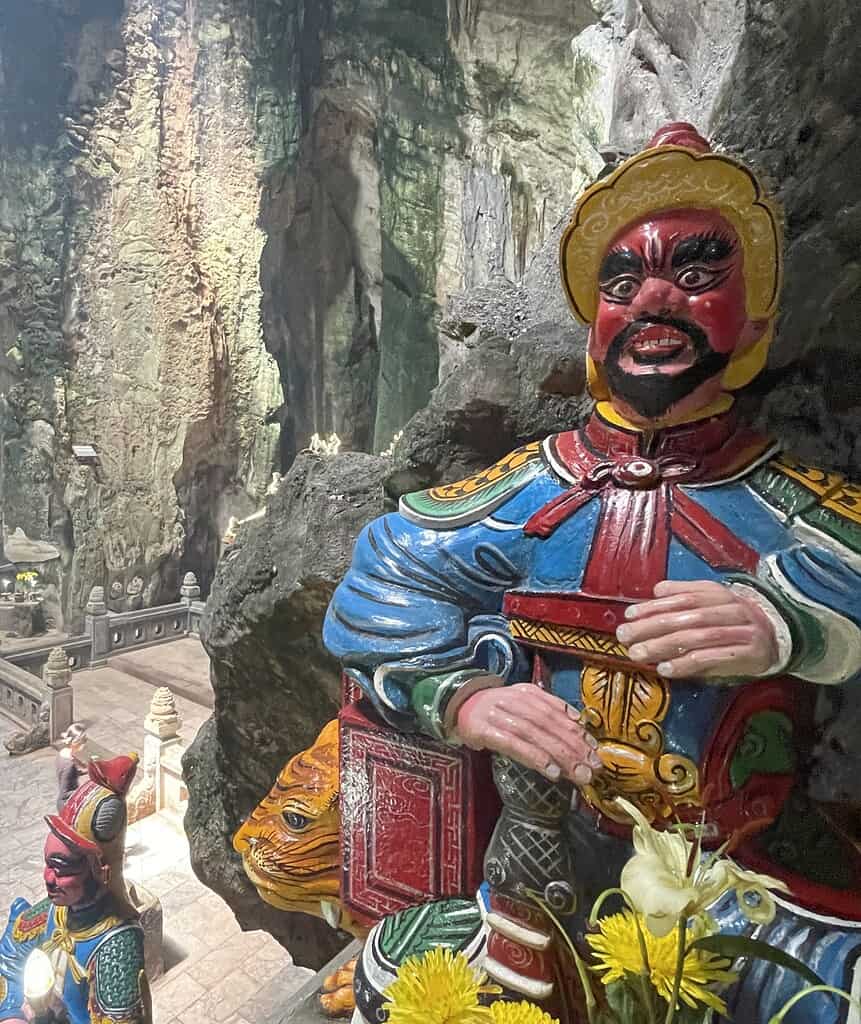
How much does it cost to visit the Marble Mountains in Da Nang?
The entrance fee is 40,000 VND, with an optional elevator ride to the main level for 15,000 VND. Extra fees may apply for parking or visiting specific pagodas or caves.
How long should I spend at the Marble Mountains?
Most travelers spend 1.5 to 2.5 hours exploring. It’s enough time to walk through the caves, visit a few pagodas, and take in the views without rushing.
What should I wear when visiting the Marble Mountains?
Wear comfortable shoes with grip, the stairs can get steep and slippery. Since there are active religious sites, modest clothing (covered shoulders and knees) is respectful and recommended.
What’s the best time to visit the Marble Mountains?
Early morning is ideal, especially around 7:00 AM when it opens. It’s cooler, quieter, and you’ll beat the crowds from tour buses that typically arrive mid-morning.

